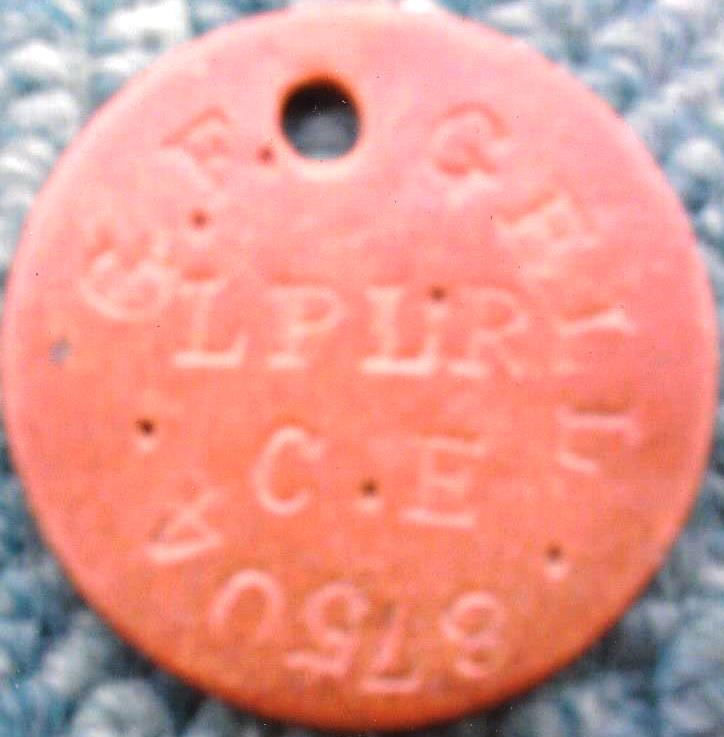.
Charles Frederick Gell
Photographs courtesy of his grandson Colin Wilkinson of Tow Law.
Charles Frederick Gell was born October 1883 in Stillington, Co. Durham and may be the son of Richard and Eliza Gell. If so he was 7 in the 1891 census, and a bricklayer, age 17, at Wolviston in the 1901 census.
Charles married Annie Elizabeth Roberts of Stockton in 1902.
In the 1911 census the family are living in the High Street. Charles was working for P. C. Scott, builders and contractors.
The eldest daughter Eva was 8, born in Stockton and was at school, as was Lily, 6, born in Aycliffe.
Their son Charles Frederick Gell was less than a month old and was born at Aycliffe.
There were also Helena Elizabeth, born 1915 and twins Florence Miriam and Mary Alice, born 1919, 6 months after Charles was killed.
Army number: 87504. Rank: Private.
Unit: 13th Battalion, King's Liverpool Regiment.
In the Absent Voters' List of October 1918 Charles' address is North Row.

Charles Frederick Gell sat 4th from left middle row.
Charles was killed in action September 1, 1918.
Charles is commemorated on the War Memorial, St. Andrew's Church, Aycliffe.

Steven Wilkinson, great grandson of Charles at his grave.
.ECOUST-ST. MEIN BRITISH CEMETERY, Pas de Calais, France
GELL , Private, C F, 87504, 13th Bn., The King's (Liverpool Regiment). 1 September 1918.
Husband of Annie Elizabeth Gell, of County Row, Aycliffe, Darlington. Grave Ref. A. 37.
Source: The Commonwealth War Graves Commission


Kirsty Bainbridge, great great granddaughter of Charles Frederick Gell at his grave.
Photograph courtesy of Peter Bainbridge, who has also sent the photograph of Charles on horseback and further information.

Charles Frederick Gell's dog tag.

Charles Frederick Gell.
Originally Charles was in the Engineers and was involved in putting up the wire in no man's land and carrying out repairs. As the war dragged on the engineers were absorbed by whatever regiment they were attached to, hence the King's Liverpool Regiment.